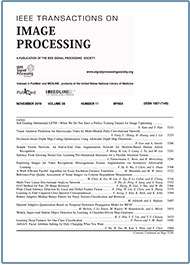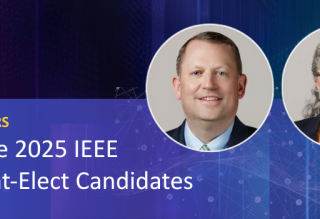Rethinking Sampling Strategies for Unsupervised Person Re-Identification
Top Reasons to Join SPS Today!
1. IEEE Signal Processing Magazine
2. Signal Processing Digital Library*
3. Inside Signal Processing Newsletter
4. SPS Resource Center
5. Career advancement & recognition
6. Discounts on conferences and publications
7. Professional networking
8. Communities for students, young professionals, and women
9. Volunteer opportunities
10. Coming soon! PDH/CEU credits
Click here to learn more.
Rethinking Sampling Strategies for Unsupervised Person Re-Identification
Unsupervised person re-identification (re-ID) remains a challenging task. While extensive research has focused on the framework design and loss function, this paper shows that sampling strategy plays an equally important role. We analyze the reasons for the performance differences between various sampling strategies under the same framework and loss function. We suggest that deteriorated over-fitting is an important factor causing poor performance, and enhancing statistical stability can rectify this problem. Inspired by that, a simple yet effective approach is proposed, termed group sampling, which gathers samples from the same class into groups. The model is thereby trained using normalized group samples, which helps alleviate the negative impact of individual samples. Group sampling updates the pipeline of pseudo-label generation by guaranteeing that samples are more efficiently classified into the correct classes. It regulates the representation learning process, enhancing statistical stability for feature representation in a progressive fashion. Extensive experiments on Market-1501, DukeMTMC-reID and MSMT17 show that group sampling achieves performance comparable to state-of-the-art methods and outperforms the current techniques under purely camera-agnostic settings. Code has been available at https://github.com/ucas-vg/GroupSampling.
Unsupervised person re-identification (re-ID) aims to learn inter-class discriminative representations and intra-class affinities for person identification using unlabeled datasets. By reducing the amount of human effort required for data annotation, unsupervised person re-ID has the potential to be extended to practical applications. Existing deep learning based unsupervised person re-ID research can be generally categorized into unsupervised domain adaptation (UDA) methods [1], [2], [3], [4], [5], [6], [7], [8], [9], [10], [11], [12], [13], [14], [15], [16], [17], [18], [19] and fully unsupervised learning (USL) methods [20], [21], [22], [23], [24], [25], [26], [27], [28], [29], [30], [31], [32], [33], [34], [35], [36]. Most recent USL methods [29], [30], [31] estimate pseudo-labels for each sample by mining feature similarities, and then the generated pseudo-labels serve as supervision to train the model. Currently, USL methods have achieved comparable performance to UDA methods or even to supervised methods without using any identity annotation. In this paper, we focus on investigating fully unsupervised person re-ID.
SPS Social Media
- IEEE SPS Facebook Page https://www.facebook.com/ieeeSPS
- IEEE SPS X Page https://x.com/IEEEsps
- IEEE SPS Instagram Page https://www.instagram.com/ieeesps/?hl=en
- IEEE SPS LinkedIn Page https://www.linkedin.com/company/ieeesps/
- IEEE SPS YouTube Channel https://www.youtube.com/ieeeSPS












